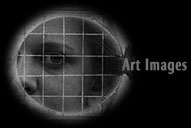Bio |
I began doing photography seriously in late 1967 while at Washington University in St. Louis. The time was one of turmoil and fear, as well as one of incredible hope and revelation. The images I saw around me soon became more important than my academic studies, and I began to pour myself into recording these things as well as that which I saw only in my mind’s eye. In the summer of 1968 I studied at The Center of the Eye photographic workshops in Aspen, Colorado, where I was fortunate to meet and work with some of the world’s best photographers. I concentrated on color printing and the technique of shooting with false-color infrared film. I began to experiment with random double exposure techniques, which resulted in a number of very strong images that were often surprising and sometimes disturbing. These were the precursors of my multi-layered video work to follow. Upon returning to St. Louis in the fall of 1968, my pictures of the Quicksilver Messenger Service at an outdoor concert were published in the St. Louis underground newspaper, Xanadu. When Jimi Hendrix came to the city in November of 1968, I was asked to do the photography. The Hendrix photos are the result of that unforgettable on-stage session with Jimi. After that night, I could never think of live performance in quite the same way. I devoted myself to photography full time and captured images of the Who, Joe Cocker, and the Grateful Dead, among many others, while still pursuing my interest in experimental photography. This led to an invitation from the Grateful Dead to come to San Francisco in early 1969. I became friends with their management and Jerry Garcia, for whom I did several projects, both photographic and video. It was through this connection that I was able to shoot onstage, “protected” by the Hells Angels, for the entire Rolling Stones concert at Altamont in December 1969, which has been widely regarded as representing the “death of the sixties”. After Altamont, I decided to do something different than rock and roll, and applied to the California Institute of the Arts (Cal Arts), in Los Angeles. There I met Nam June Paik, the “father of video art” and immediately began two years of work with him and Shuya Abe, which resulted in a BFA and a self-constructed copy of their Paik/Abe Video Synthesizer. This was the first device capable of manipulating, abstracting, and colorizing multiple layers of video images in real time, and was operated much as one would play a musical instrument. From Cal Arts, I was accepted into the School of the Art Institute of Chicago, where I worked with Dan Sandin, built his Image Processor, and earned my MFA. My work has been shown at the Museum of Modern Art in New York (1974), Paris Museum of Modern Art (1974), Long Beach Museum of Art (1975,76-77) Walker Art Center, Minneapolis (1972), and festivals in Arles, France (1974), Cologne, Germany (1974), and Buenos Aires, Argentina (1977). I have done several gallery shows and many live performances, as well as a 30 minute broadcast program “TV Song” for PBS in Chicago. I continued to work seriously with the synthesizers until the mid eighties, and they are still functioning in my studio. For the past seven years I have devoted myself to the new medium of digital photography as well as ethnographic video documentation of Pacific Island cultures. I have also begun to print my collection of photographs from the 1960s. These photos are the first results of that effort. |
|
 |
|